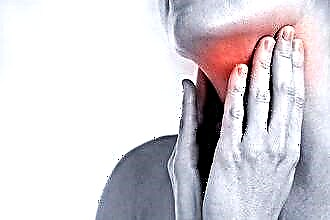Hearing impairment can be either congenital or acquired. If it does not go away on its own within a few days and requires treatment, then hearing loss can be diagnosed. Unfortunately, in recent years, more and more people are exposed to this disease to one degree or another. Medicine distinguishes several types of hearing loss, each with its own method of treatment.
Diagnosis of the disease
 At first glance, there is nothing easier than to diagnose a person with hearing loss - it is enough that he does not hear well. But it is quite possible that the reason for this was a banal sulfur plug, which blocked the auditory canal and reduced sound conductivity. And immediately after its removal, hearing is fully restored. If the sulfur plug is dense and deeply seated, only a doctor can detect and remove it without risk of damaging the ear.
At first glance, there is nothing easier than to diagnose a person with hearing loss - it is enough that he does not hear well. But it is quite possible that the reason for this was a banal sulfur plug, which blocked the auditory canal and reduced sound conductivity. And immediately after its removal, hearing is fully restored. If the sulfur plug is dense and deeply seated, only a doctor can detect and remove it without risk of damaging the ear.
Therefore, when dealing with complaints of poor hearing, first of all, a thorough examination of the patient's ear is performed. If no sulfur plug is found, a tuning fork test is performed, which helps to find out if the person can correctly determine which side the sound is coming from. And also what he feels better - sound or vibration. Bilateral hearing loss means that a person has a hard time hearing in both ears. When unilateral, one of the organs is completely healthy.
Then threshold audiometry is performed - the frequency range in which the patient hears or does not hear sounds is determined. And the final test - impedance measurement - the doctor finds out which parts of the hearing aid are affected by the disease, whether there is water in the ear and / or active inflammatory processes.
After research, the doctor can confidently diagnose hearing loss, types and degree of the disease and only then prescribe the appropriate treatment.
Types of hearing loss
The types of hearing loss are classified according to two main parameters: the signs of ear damage and the method of acquiring the disease. Depending on which parts of the ear are damaged, the following may be diagnosed:
 Sensorineural hearing loss - arising from injuries or diseases of the inner ear (cochlea). Most often this is the result of complications after severe illnesses, a consequence of taking strong antibiotics, or one of the symptoms of the development of a brain tumor. With this disease, the normal perception of sound is disturbed, and even if the threshold of sensitivity is slightly exceeded, a sharp and severe pain occurs.
Sensorineural hearing loss - arising from injuries or diseases of the inner ear (cochlea). Most often this is the result of complications after severe illnesses, a consequence of taking strong antibiotics, or one of the symptoms of the development of a brain tumor. With this disease, the normal perception of sound is disturbed, and even if the threshold of sensitivity is slightly exceeded, a sharp and severe pain occurs.- Conductive hearing loss is diagnosed with injuries and diseases of the middle ear. With it, the conductivity of sound is disturbed, and it does not reach the eardrum. Most often, the disease occurs with otitis media, especially chronic and purulent, otosclerosis. Sometimes the cause is a hardening of the eardrum or damage to the ossicles. It can be one-sided and two-sided.
- Mixed hearing loss is diagnosed with the simultaneous presence of symptoms of conductive and sensorineural hearing loss. This is the most difficult type of hearing loss, as it requires complex and long-term treatment.
The earlier the disease is detected and treatment is started, the greater the likelihood of complete recovery. Acute sensorineural hearing loss symptoms are pronounced: a significant hearing loss, tinnitus, dizziness, impaired coordination of movements, pain with sharp sounds. If they appear within several days for no apparent reason, then you must immediately consult a doctor in order to prevent the development of the disease.
 According to the method of acquiring the disease, there are:
According to the method of acquiring the disease, there are:
- Congenital hearing loss - when a child is already born with partial or complete hearing loss. Such hearing loss is inherited or develops in the fetus due to abnormalities in the course of pregnancy or taking antibiotics in the early stages.
- Acquired - develops in a healthy person under the influence of external or internal factors: negative environmental conditions, injuries, past diseases, medication, etc. It is this type of hearing loss that is best treated in the early stages.
- Senile hearing loss - develops as a result of irreversible age-related changes. It is impossible to completely cure it, but modern medicine is quite capable of slowing down the development of the disease. It is possible to compensate for senile hearing loss with the help of modern hearing aids.
With a severe hearing loss, a person is even assigned a disability group, since he cannot lead a normal life - it is difficult for him to communicate with others, navigate the street, and perform some types of work.
If the sensorineural hearing loss is bilateral and significant, surgery may be helpful. But this is a serious intervention and only a qualified doctor can make a decision about its expediency.
Prevention measures
Hearing loss is a serious and fairly rapidly progressive disease that can ultimately lead to complete hearing loss. Therefore, if you notice a sudden persistent hearing loss, it is best to see a doctor immediately.
 In addition, in everyday life, it is worth taking simple preventive measures that significantly reduce the risk of developing the disease:
In addition, in everyday life, it is worth taking simple preventive measures that significantly reduce the risk of developing the disease:
- avoid prolonged hypothermia of the body and ears;
- avoid drafts and strong winds;
- try not to be in a room with very loud sounds for a long time;
- do not run any viral and infectious diseases;
- do not listen to music too loudly through headphones;
- do not take antibiotics without a doctor's prescription and do not exceed the prescribed dosage;
- carefully follow the rules of personal hygiene and clean your ears regularly.
An additional risk factor is the use of drugs and large doses of alcohol. Serious sexually transmitted diseases can also cause complications in the ears. Therefore, the best prevention is a healthy lifestyle and going to a doctor at the first signs of hearing pathology.

 Sensorineural hearing loss - arising from injuries or diseases of the inner ear (cochlea). Most often this is the result of complications after severe illnesses, a consequence of taking strong antibiotics, or one of the symptoms of the development of a brain tumor. With this disease, the normal perception of sound is disturbed, and even if the threshold of sensitivity is slightly exceeded, a sharp and severe pain occurs.
Sensorineural hearing loss - arising from injuries or diseases of the inner ear (cochlea). Most often this is the result of complications after severe illnesses, a consequence of taking strong antibiotics, or one of the symptoms of the development of a brain tumor. With this disease, the normal perception of sound is disturbed, and even if the threshold of sensitivity is slightly exceeded, a sharp and severe pain occurs.

